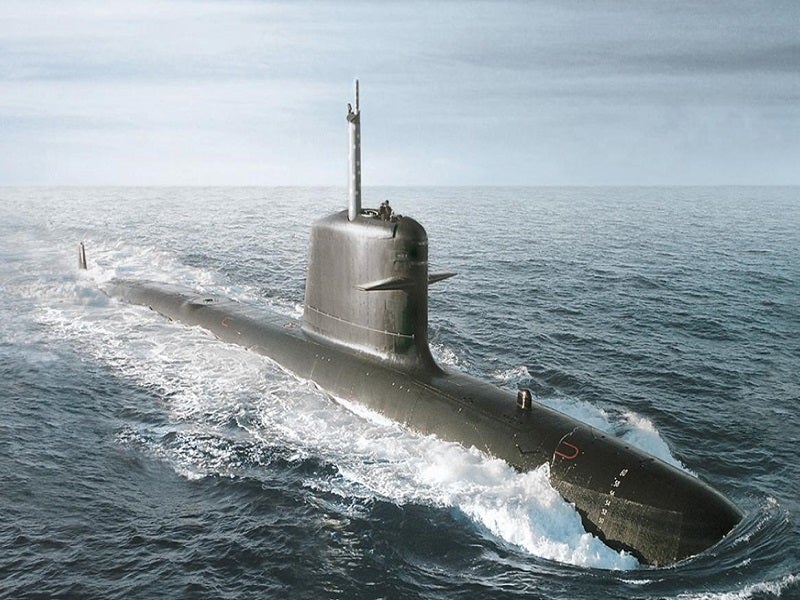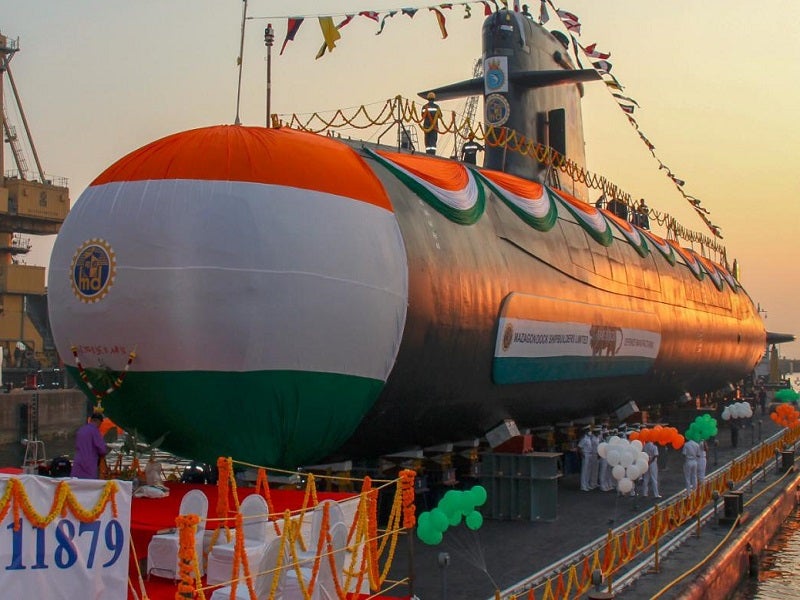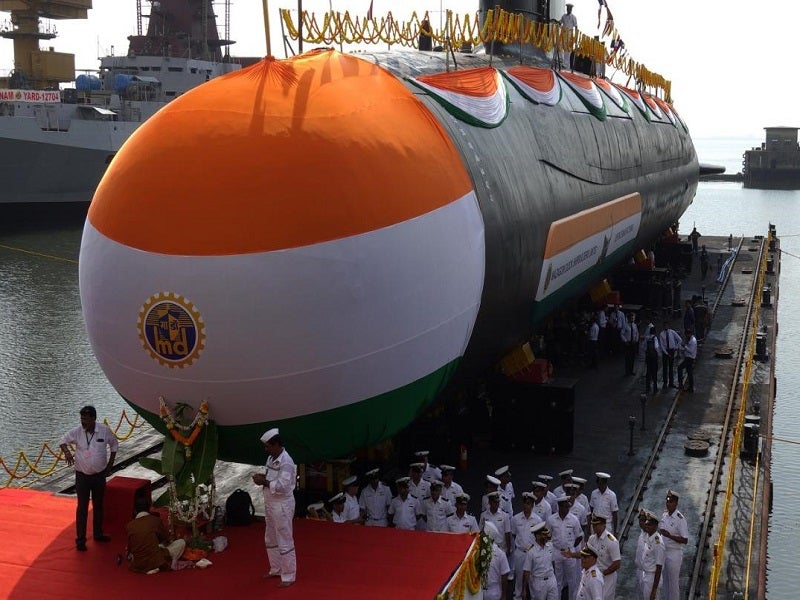The Kalvari-class diesel-electric attack submarines are being developed for the Indian Navy. The submarines have been ordered by the Indian Ministry of Defence (MoD) under Project 75 (P75), which involves the acquisition of six ships of the Kalvari-class.
The P75 Kalvari-class diesel-electric / air-independent propulsion (AIP) submarines are based on the Scorpene-class submarines, which were designed by French naval shipbuilding firm Naval Group (formerly known as DCNS) in partnership with Spanish shipbuilding firm Navantia.
The new submarines are being built by Mazagon Dock Shipbuilders (formerly known as Mazagon Dock) in Mumbai, India, using the technology and training provided by Naval Group.
The Indian Navy intends to use the submarines for missions including area surveillance, intelligence gathering, anti-submarine warfare, anti-surface warfare and minelaying operations.
The first submarine in the class, INS Kalvari, was undocked at Mazagon Dock in April 2015 and was launched in Mumbai in October of the same year. Sea trials of the INS Kalvari began in May 2016 and the submarine underwent weapon, surface, noise and diving trials prior to its commissioning in December 2017.
INS Khanderi, the second submarine in the class, was launched in January 2017 and commissioned in September 2019. The third Scorpene-class submarine, INS Karanj, was launched in January 2018 and commissioned in March 2021. The launching ceremony of the fourth submarine, INS Vela, was held in May 2019.
The fifth submarine of the P75 Kalvari-class, INS Vagir, was launched at Mazagon Dock Shipbuilders’ facility in Mumbai in November 2020.
Scorpene-class submarines have also been acquired by the naval forces of Chile, Malaysia and Brazil.
Kalvari-class design and features
The P75 Scorpene-class features a pressure hull and superior stealth capabilities. It accommodates between 25 and 31 crew members as well as 14 combat divers. The submarine has a width of 6.2m, length of 67m and submerged displacement of 1,550t.
DCNS’ SUBTICS integrated combat system enables operation and control of all on-board sensors, weaponry and radars from multifunction common consoles. The motion of the submarine is controlled by a steering system using rudder and hydroplanes.
P75 Scorpene-class weaponry
The P75 Scorpene-class submarines are armed with six torpedo launching tubes, 18 heavy weapons, tube-launched MBDA SM-39 Exocet anti-ship missiles and precision-guided weapons. The weapons are carried in weapon launching tubes and can be easily reloaded at sea.
The submarine can launch crippling attacks on surface and underwater enemy targets.
Sensors on board the Kalvari-class submarines
The Thales-developed on-board S-CUBE integrated and modular submarine sonar suite offers increased safety against a wide variety of threats in deep or coastal waters. It comprises sonar arrays, including bow, stern, planar flank, intercept, distributed, towed and active, as well as mine and obstacle avoidance sonar, and self-noise-monitoring hydrophones.
The submarine is also equipped with Sagem surveillance and radars.
Propulsion and performance
The submarines in the P75 Scorpene-class are powered by conventional diesel-electric propulsion systems. The last two submarines are expected to be equipped with AIP technology, which is developed by DRDO to provide long-range and extended endurance capabilities. The submarines are also installed with batteries.
The propulsion, electricity, auxiliary and safety systems on board the submarine are controlled using a platform management system.
The attack submarines can travel at a maximum submerged speed of approximately 20k and have the ability to remain submerged for 21 days. The P75 Scorpene-class has a diving depth of more than 350m.
Contractors involved in the P75 Scorpene-class submarines programme
Special material forgings specialist Flash Forge India received a contract from DCNS India, a subsidiary of DCNS, for the supply of critical equipment for the submarines, in June 2011.
SEC Industries secured a contract from DCNS India to supply technological equipment for the P75 Scorpene submarines programme in September 2011.
In March 2012, DCNS awarded a €50m ($65.9m) contract to SEC Industries to supply equipment including hull hatches, ballast vent valves, weapons handling, storage systems and high-pressure air cylinders.
The command consoles are manufactured by HBL Power Systems.






